Sun-Path Diagrams
Show you:
• Where in the sky the sun will be at any time of day throughout the year;
• The hours of direct sunlight a building, garden, or surface will receive at any time of the year;
• How objects will beneficially or negatively shade a building, garden, or other surface on different dates and/or at different times;
…all this can be determined with the help of the sun-path diagram for the latitude closest to your site. See appendix 7 of the new 3rd edition of Rainwater Harvesting for Drylands and Beyond, Volume 1 for guidelines on applying these diagrams to your site.
For an example, see the sun-path diagram for Tucson, 32ºN latitude, below.
Click here to access similar diagrams for the following latitudes (every 4º from 68ºN to 68ºS):
64–68º North
48–60º North
32–44º North
16–28º North
0–12º North
0–12º South
16–28º South
32–44º South
48–60º South
64–68º South
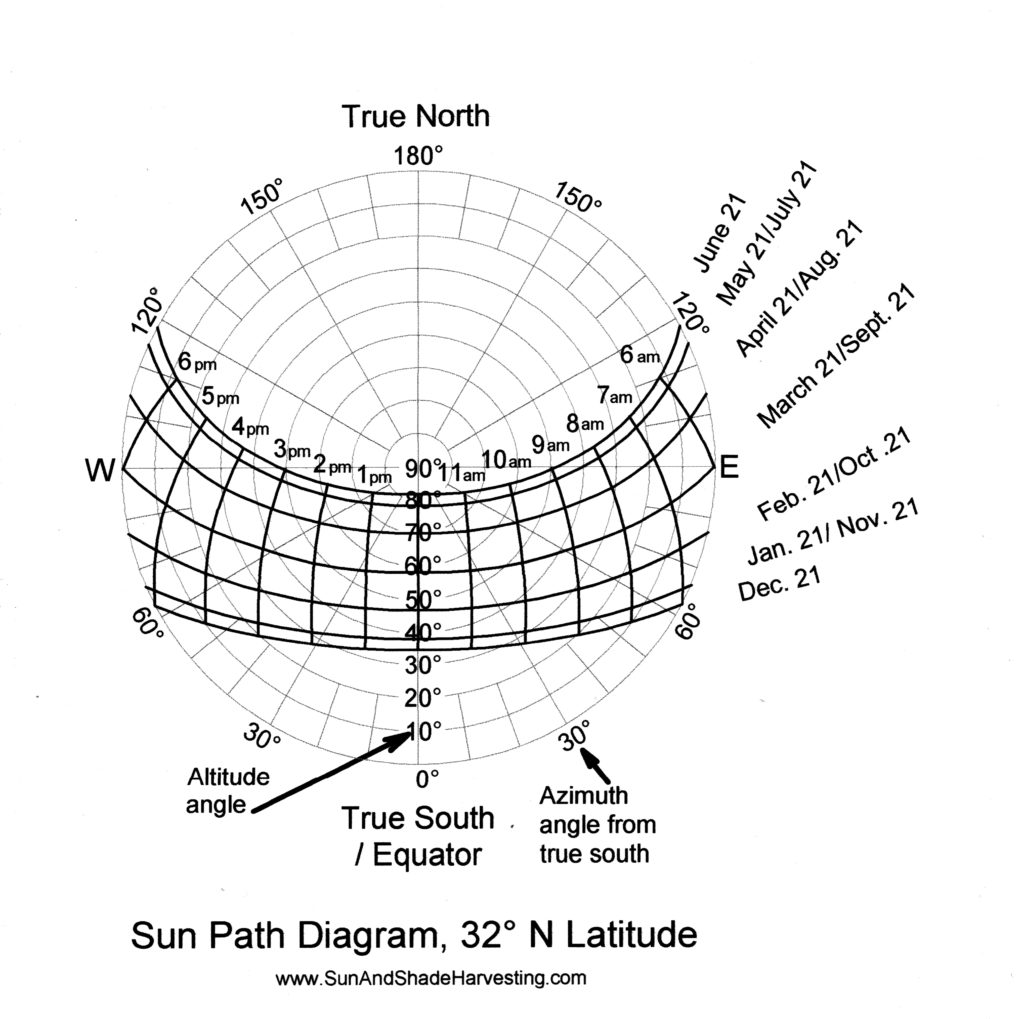
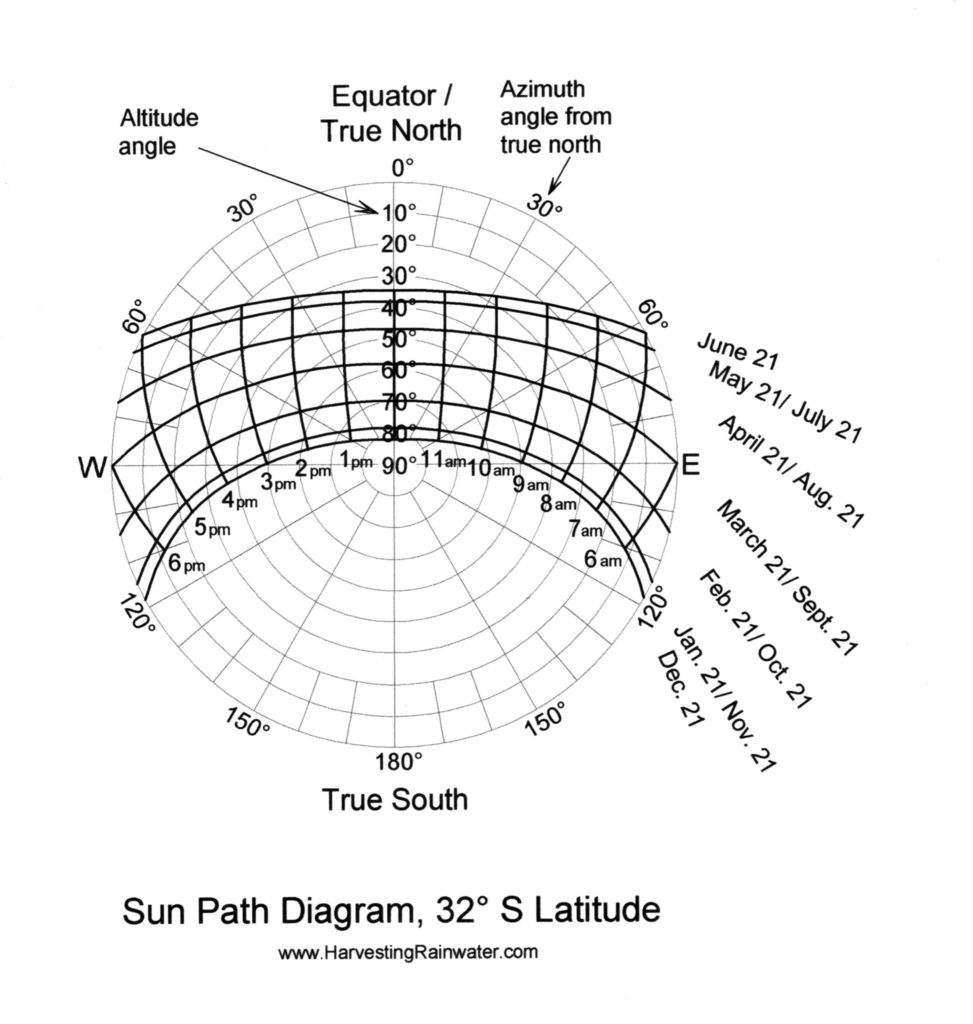
How to use a Sun-Path Diagram to figure out where the sun will be at your latitude any time of day, any day of the year.
More-detailed info, along with how-to-use illustrations for northern latitudes, is given in appendix 7 of Rainwater Harvesting for Drylands and Beyond, Volume 1, 3rd Edition.
Meanwhile, below you’ll find distilled how-to steps and illustrations using a Sun-Path Diagram for 32º South latitude.
Step One
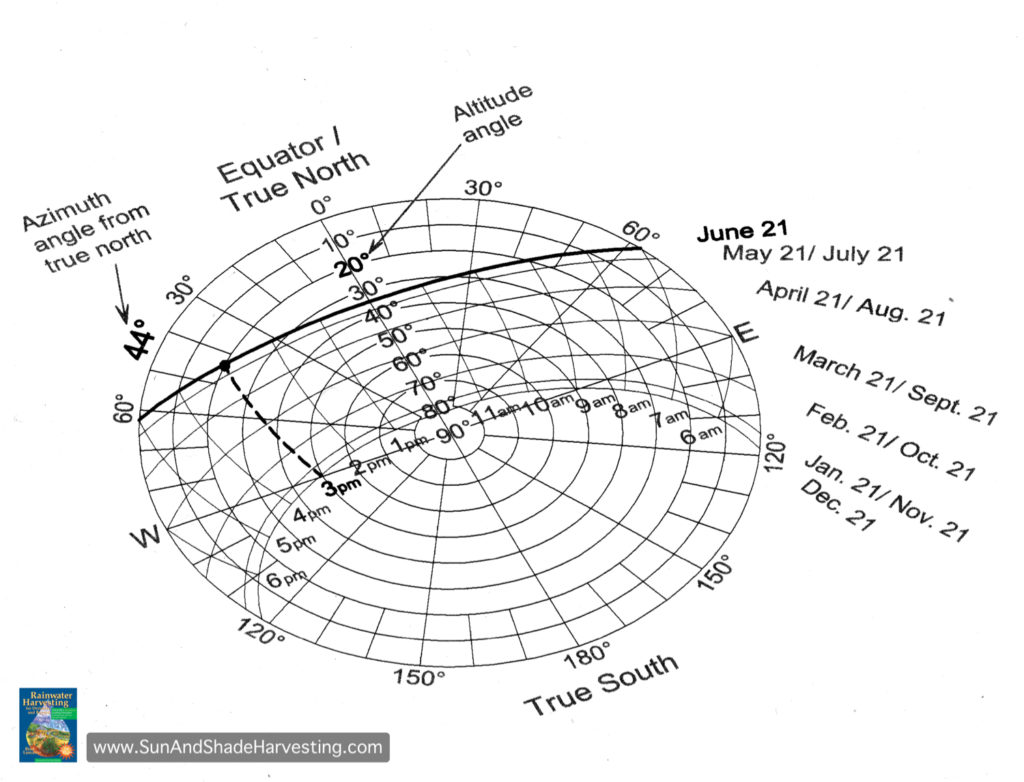
Step Two
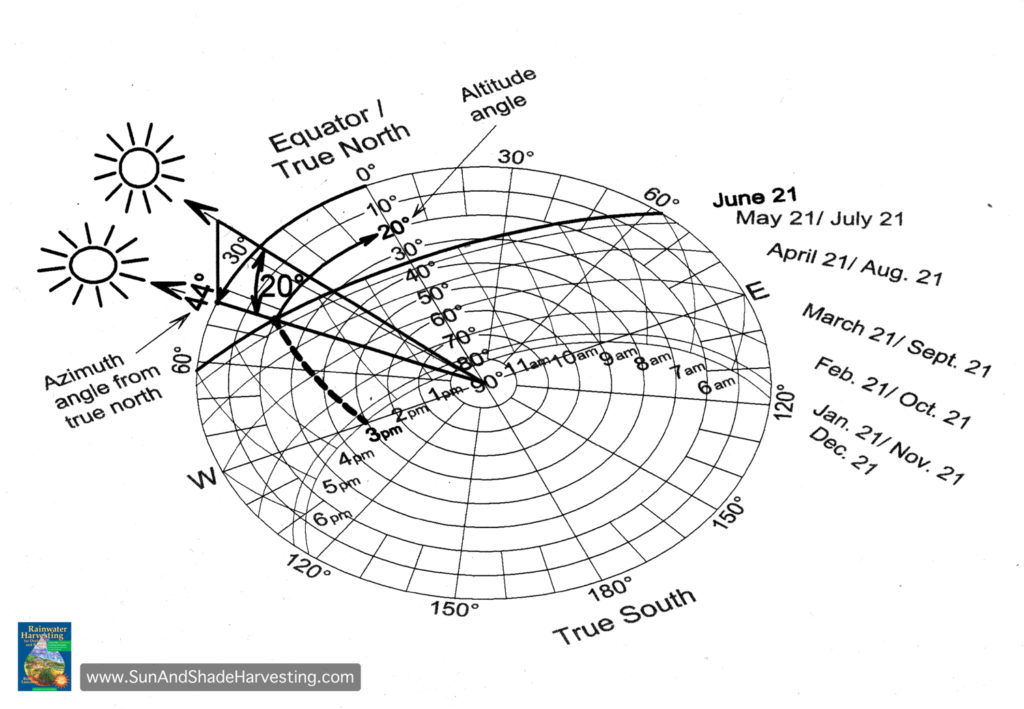
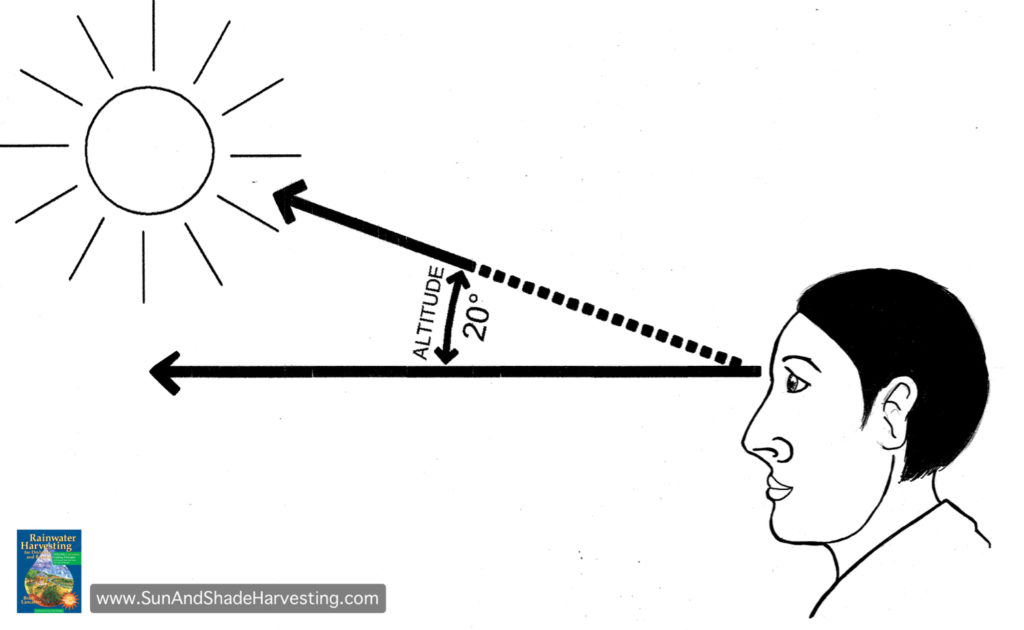
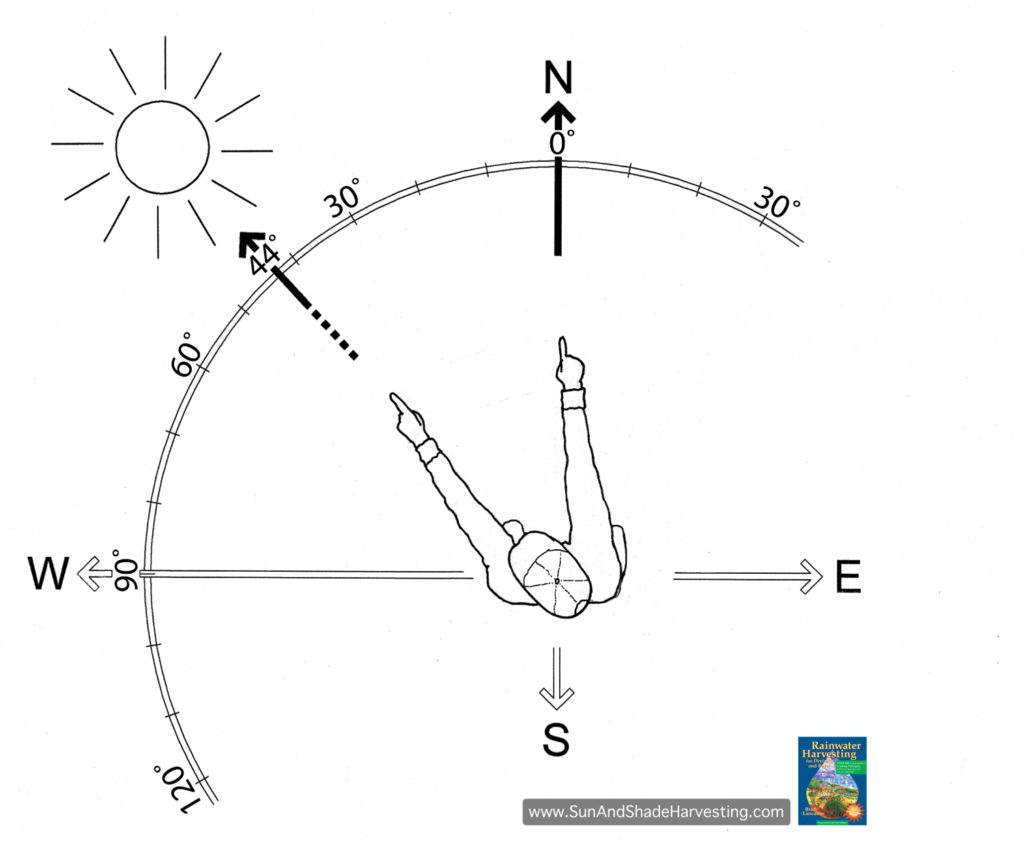
For more
See the new, full-color, revised editions of Brad’s award-winning books
– available a deep discount, direct from Brad:

Volume 1
Volume 1 has detailed sun & shade harvesting info on:
- More on sun path diagrams and how to use them
- Orienting buildings and landscapes to the sun
- Designing roof overhangs and awnings to optimize winter sun and summer shade
- How to choose and size windows to optimize passive heating and cooling
- Solar power guidelines
- Solar arcs
- Sun & shade traps
- Maintaining winter sun access with winter-solstice shadow ratios and solar rights
- Sun angles and path for any latitude and season
- How to find your way, and true north or south, with the sun and other stars
- How to place vegetation or structures to maximize natural ventilation or windbreaks
- Table comparing the energy consumed, water consumed, and carbon emitted of active and passive clothes drying, water heating, food storage & prep, lighting, heating, and cooling strategies.
Especially see chapter 4 and appendix 7
